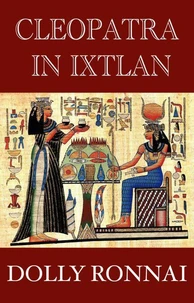"Jesus said, 'Let him who seeks continue seeking until he finds. When he finds, he will become troubled. When he becomes troubled, he will be astonished, and he will rule over the All.'" This spoken by the Master was banned by the budding Christian Church two-thousand years ago, still deemed a heretical teaching to this day. The Verbal Truth of Christianity effects to bring you to the crux of the central message of the Jesus mission, a universal one of reality's truer nature, the defining of God and cosmos in believable and constructive terms; an understanding of the eternal realm and our relation to it.
A simple message overlooked by scholars, yet of such complexity it takes lifetimes to realize; to see and understand how by ignorance and fear we frame our living narratives in birth and death -- necessitating a false mortality. In Chapter 1 this book offers a greater explanation of what "life" is and sets a foundation for a more developed, elevated, meaningful, concept of "God". Chapter 2 opens with a short exploration of the time and place setting of the story of Jesus, making effort for determining who he was, what he said, why he said it, and further to sift out what he said that the Christian Church embraced, and what he said that the Church rejected.
And more importantly, we will begin to see what the Church teaches that Jesus never said or taught. In Chapter 3 we will briefly look at credible gospels of Jesus that the Church rejected then and still rejects now, primarily the "Gnostic" Gospel of Thomas lost to the ages until uncovered by chance in 1945. Chapter 4 reconciles the canonical (New Testament) gospels of the Christian Church with legitimate rejected gospels that the Church deemed heretical (wrong teachings).
From this, and with our more elevated understanding of life and who God is, a clear Jesus message emerges of which logic and understanding replaces the childlike message of "faith". In Chapter 5 we look at the sameness between the true Jesus message and other religions, philosophies and sciences. Chapter 6 puts it all together into a single unified message answering our purpose for being here in this world now and ahead.
"Jesus said, 'Let him who seeks continue seeking until he finds. When he finds, he will become troubled. When he becomes troubled, he will be astonished, and he will rule over the All.'" This spoken by the Master was banned by the budding Christian Church two-thousand years ago, still deemed a heretical teaching to this day. The Verbal Truth of Christianity effects to bring you to the crux of the central message of the Jesus mission, a universal one of reality's truer nature, the defining of God and cosmos in believable and constructive terms; an understanding of the eternal realm and our relation to it.
A simple message overlooked by scholars, yet of such complexity it takes lifetimes to realize; to see and understand how by ignorance and fear we frame our living narratives in birth and death -- necessitating a false mortality. In Chapter 1 this book offers a greater explanation of what "life" is and sets a foundation for a more developed, elevated, meaningful, concept of "God". Chapter 2 opens with a short exploration of the time and place setting of the story of Jesus, making effort for determining who he was, what he said, why he said it, and further to sift out what he said that the Christian Church embraced, and what he said that the Church rejected.
And more importantly, we will begin to see what the Church teaches that Jesus never said or taught. In Chapter 3 we will briefly look at credible gospels of Jesus that the Church rejected then and still rejects now, primarily the "Gnostic" Gospel of Thomas lost to the ages until uncovered by chance in 1945. Chapter 4 reconciles the canonical (New Testament) gospels of the Christian Church with legitimate rejected gospels that the Church deemed heretical (wrong teachings).
From this, and with our more elevated understanding of life and who God is, a clear Jesus message emerges of which logic and understanding replaces the childlike message of "faith". In Chapter 5 we look at the sameness between the true Jesus message and other religions, philosophies and sciences. Chapter 6 puts it all together into a single unified message answering our purpose for being here in this world now and ahead.

 , qui est-ce ?
, qui est-ce ?